Wave Optics Blog Posts

Exploiting Symmetries in RF and Wave Optics Modeling
We can simplify and reduce the size and computational complexity of a wave electromagnetics model by taking advantage of any symmetries it may have. Learn how to do so here.

From Spectrum to Color: Using Modeling to Understand How Red Glass Is Made
How is red glass made? We answer this question by examining the transmission spectrum with wave optics modeling.

Tracking Eigenmodes over Parametric Sweeps
In this blog post, we explore how to easily identify, sort, and group eigenmodes across many parameter cases when performing a mode analysis.

Modeling a Hyperbolic Wave in a Layered Metal–Dielectric Metamaterial
Learn how model a metamaterial made of thin layers of periodically organized silver and silicon dioxide and calculate its permittivity tensor components.
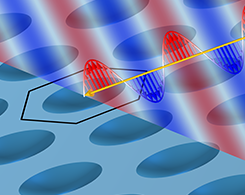
Understanding Higher-Order Diffraction
Explore how to use the Ewald sphere to study diffraction from planar periodic structures. (Interact directly with the model to get the full picture!)
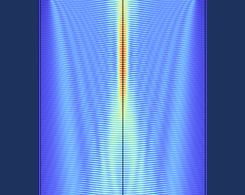
Building a Metalens Design App with COMSOL Multiphysics®
Here, we explore how to build a simulation app for reflective metalens design, which can easily be compiled into a standalone app.

Shape Optimization in Electromagnetics: Part 1
Learn how shape optimization can be used to improve the designs of wave optics applications. Part 1 of 2.
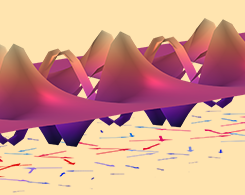
Modeling Surface Plasmon Polaritons in COMSOL®
Due to their potential applications in nanoscale manipulation of light, surface plasmon polaritons (SPPs) are of great research interest. Learn how to model them here.
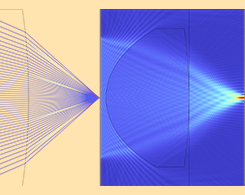
How to Use the New Spatial FFT Feature for Applications in Optics
COMSOL Multiphysics® version 6.0 includes the new Spatial FFT feature. Learn how this feature can be used in applications in optics here.
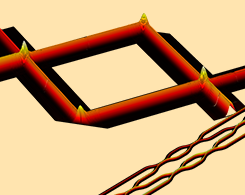
Analyzing an Optical Computation Device with Simulation
Here, we discuss Moore’s law, optical computing, Mach–Zehnder interferometer networks, and wave optics simulation.
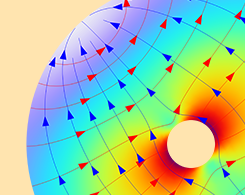
Mode Analysis for Electromagnetic Waveguides in COMSOL®
Get an introduction to mode analysis, which can be used to investigate mode characteristics in complex waveguide structures.

Investigating the Penrose Unilluminable Room with Ray Optics
Is the Penrose unilluminable room really unilluminable? We investigate this question using the Ray Optics and Wave Optics modules…

Modeling Graphene in High-Frequency Electromagnetics
Graphene exhibits a variety of interesting properties, including high elasticity and mechanical strength. In this blog post, we’ll explore how to model graphene in an electromagnetic simulation.

Electromagnetic Scattering in 2D Axisymmetric Models
You can save computational time and memory by performing electromagnetic scattering in 2D axisymmetric models rather than 3D. Learn more here.

Designing Antireflecting Microstructures for Infrared Applications
Explore how 2 microstructure designs can improve the bulk transmittance of silicon (~70%) and cadmium zinc telluride (~79%) to more than 90% within the specific wavelength spectrum.
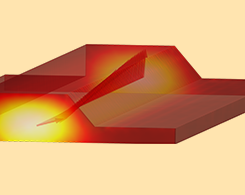
How to Model Polarization Rotation Along a Waveguide
Interested in modeling photonic waveguiding structures? Learn some efficient techniques for devices with multiple supported waveguide modes and identical waveguide cross sections.

2020 Isaac Newton Medal and Prize Awarded to Nader Engheta
Get an overview of the Isaac Newton Medal and Prize — and the optical physicist who won this year.
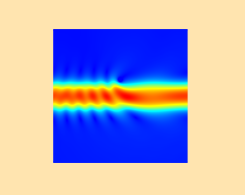
Modeling a Scatterer Near an Optical Waveguide
In the real world, most structures are more complex than a 2D dielectric slab. However, if you’re designing photonic structures, you can learn a lot about wave optics modeling from this example.

Modeling Waveguides that Support Multiple Modes
2 ways you can model a waveguide that supports multiple modes: add a PML that can be used to absorb any modes, or explicitly add ports for each possible mode.

2 Video Discussions on Multiphysics Simulation of Optics and Photonics
John Wallace, senior editor at Laser Focus World, and Chris Boucher, technical product manager at COMSOL, discuss the use of multiphysics simulation in the optics R&D community. Take a look…

Computational Electromagnetics Modeling: Which Module to Use?
If you work with a particular electromagnetic device or application area, you might be wondering which module in the COMSOL product suite is right for you. Keep reading for a comprehensive intro.
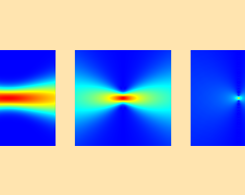
Evanescent Component of the Nonparaxial Gaussian Beam
The evanescent component of the nonparaxial Gaussian beam background field is available as a feature in the Wave Optics and RF modules as of COMSOL Multiphysics® version 5.5.

Modeling the Scattering of Light Off of an Object on a Substrate
A common modeling scenario in wave electromagnetics: computing the scattering of light off of a structure patterned on top of a uniform dielectric substrate.
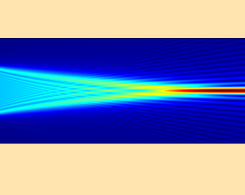
How to Perform Lens Simulations Using the Wave Optics Module
Lens simulations in wave optics can be difficult to perform, as they usually require a lot of mesh elements. Learn how to sidestep this issue using the functionality of the Wave Optics Module.
